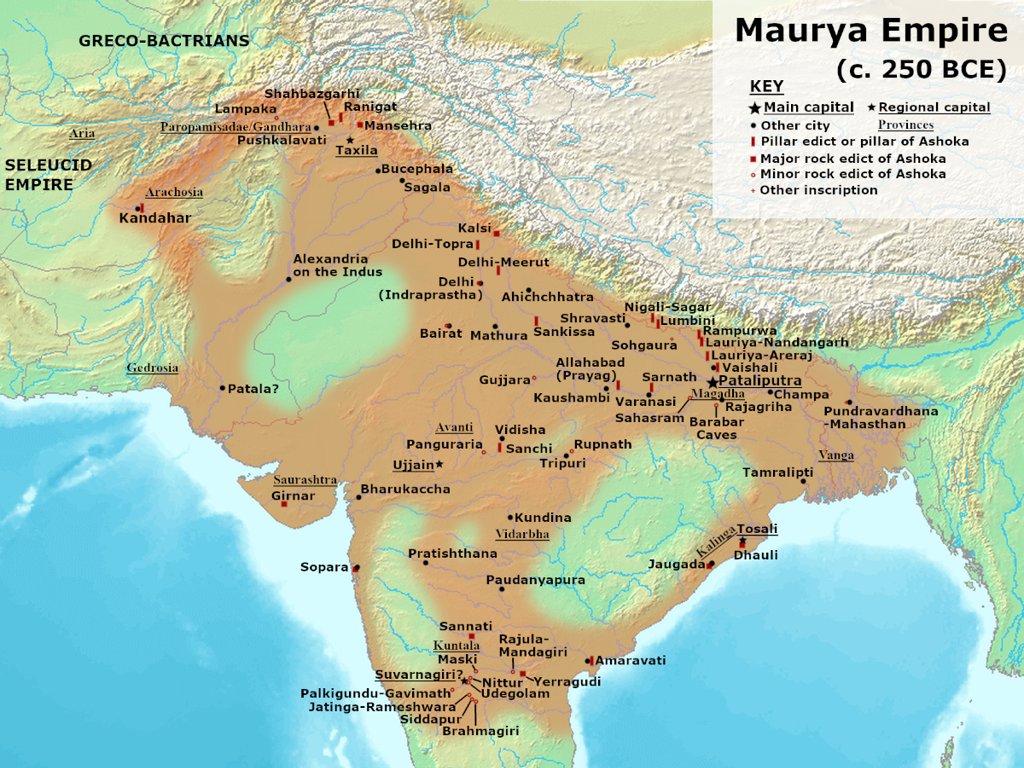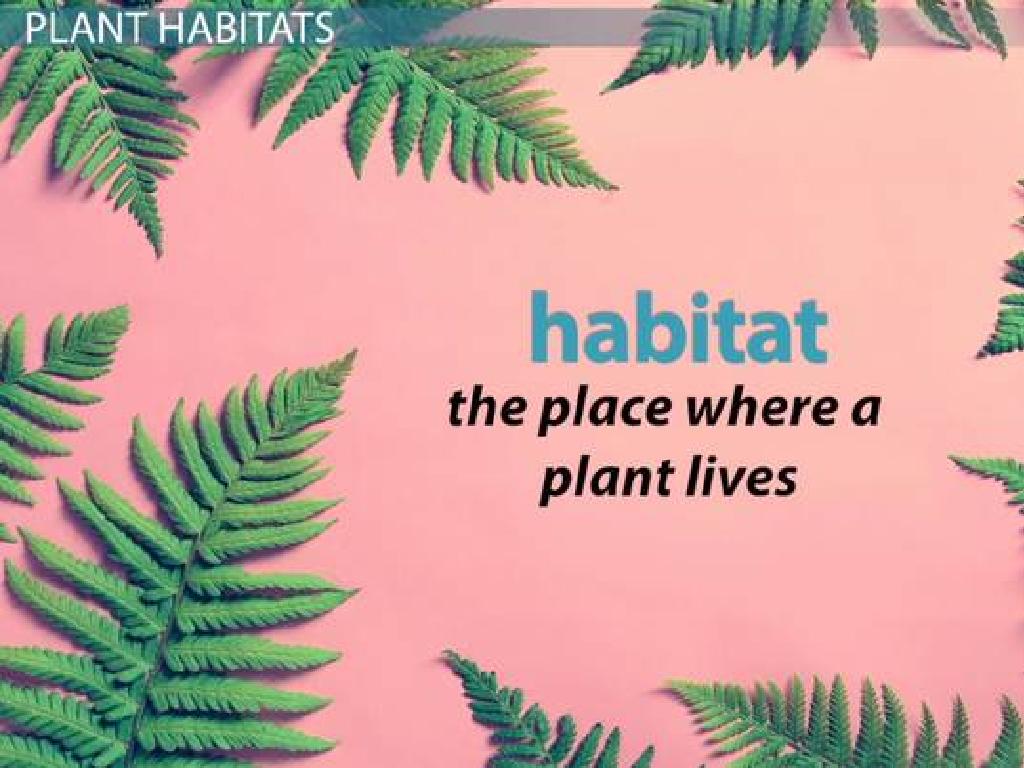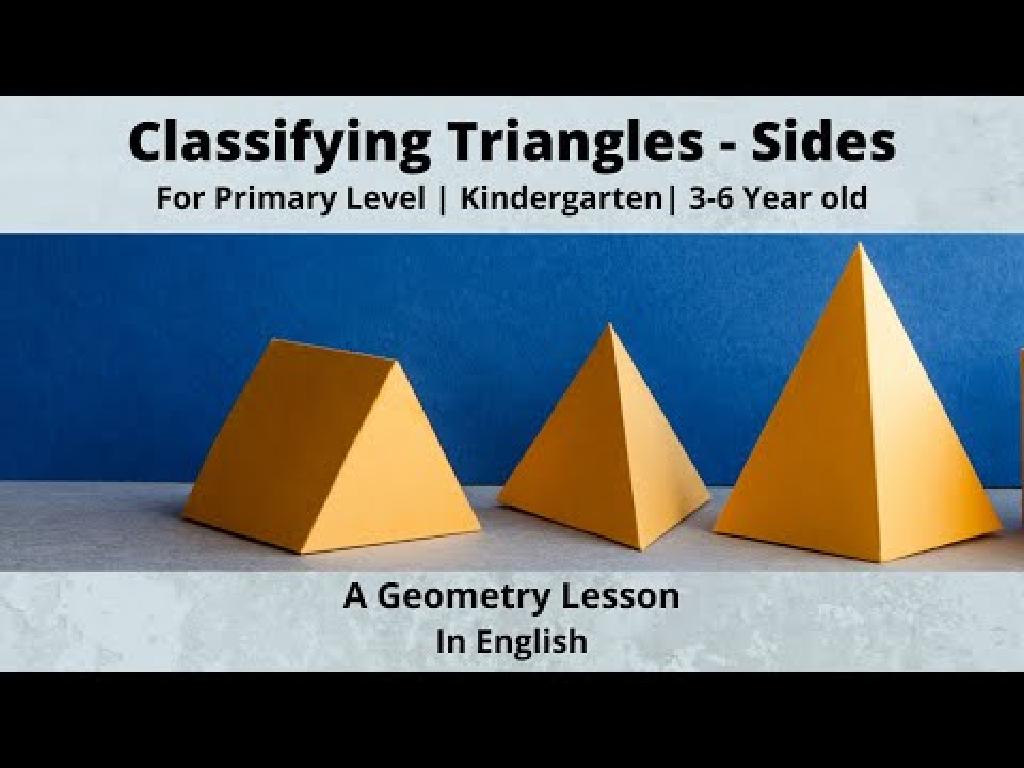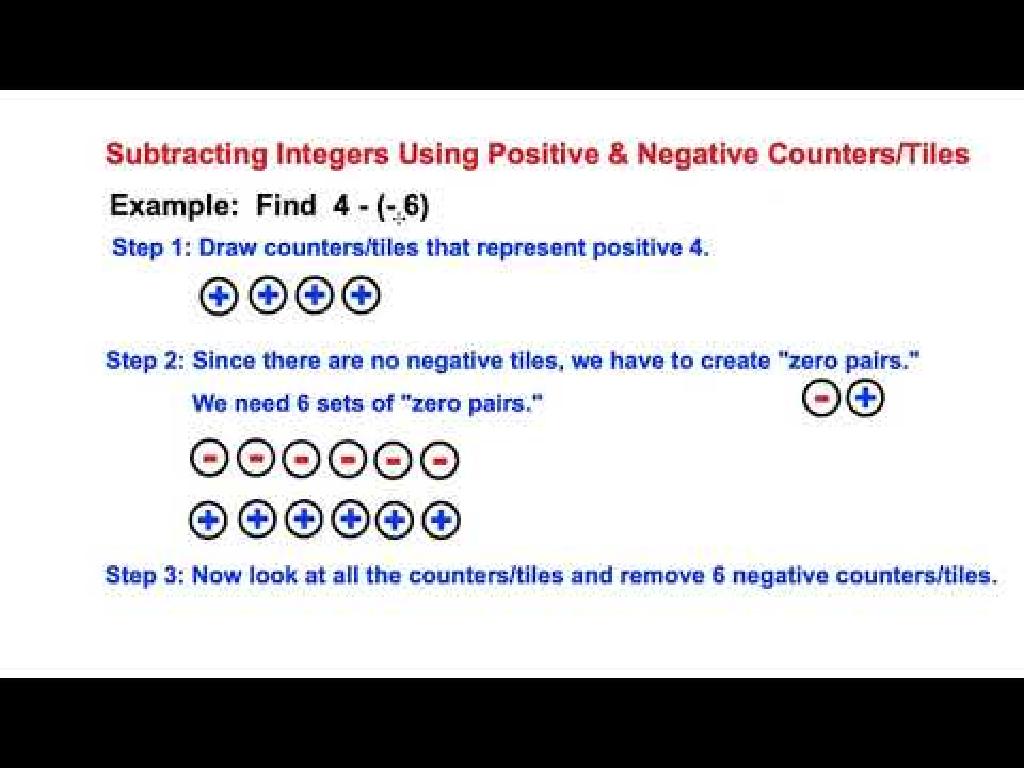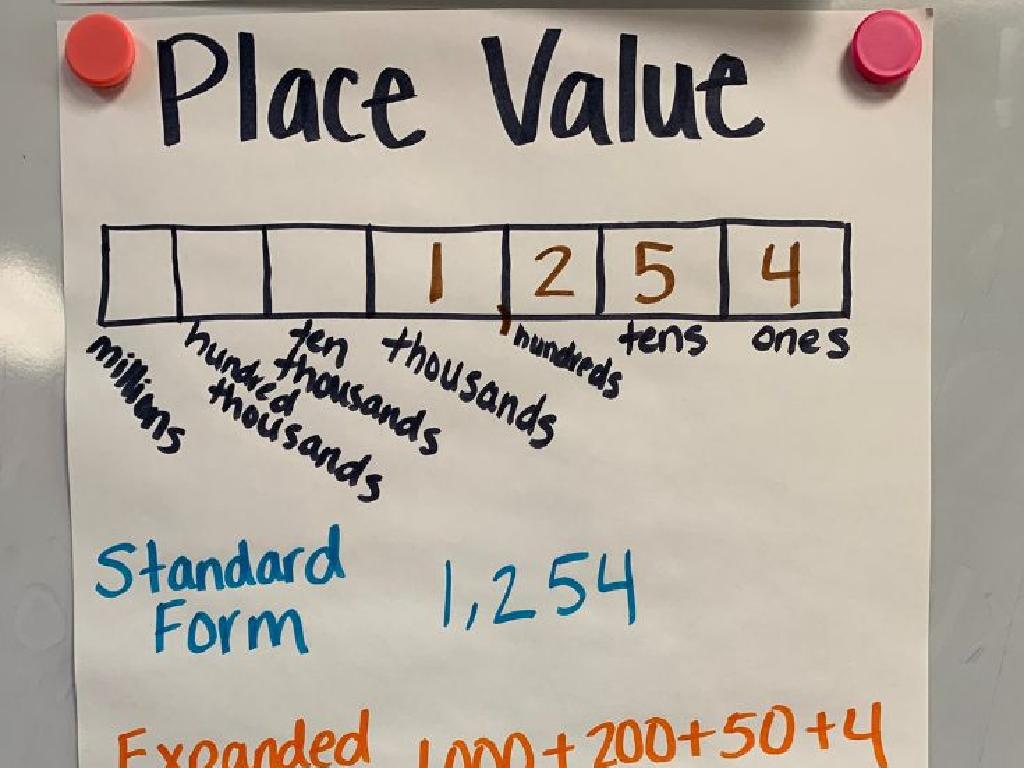Are There Enough?
Subject: Math
Grade: Pre-k
Topic: Compare Groups
Please LOG IN to download the presentation. Access is available to registered users only.
View More Content
Are There Enough?
– Greet our young mathematicians
– Introduce ‘Are there enough?’ game
– A fun game to see if one group has the same, more, or fewer items than another
– Learn to compare groups
– Use toys or blocks to see which group is bigger or if they are equal
– Understand ‘enough’ concept
– ‘Enough’ means having as many as we need
|
Welcome the children with enthusiasm to spark their interest in math. Today’s activity, ‘Are there enough?’, is designed to teach Pre-K students the concept of comparing quantities in a fun and interactive way. The game will involve comparing different groups of items, such as toys or blocks, to determine if there are as many as needed, more, or fewer. This will help them understand the concept of ‘enough’ and lay the foundation for number sense. Encourage the children to participate actively and ask questions. Prepare a set of items for comparison and ensure there are enough materials for each child to engage in the activity. This hands-on experience is crucial for their understanding of mathematical concepts at this developmental stage.
Learning to Compare: Are There Enough?
– ‘Compare’ means finding differences and similarities
– We can compare many things like size and color
– Comparing helps us understand quantity
– Comparing numbers helps us with counting and math
– Let’s compare: Do we have enough?
– For example, comparing the number of apples to oranges we have
|
This slide introduces the concept of comparison to Pre-K students, focusing on understanding the idea of ‘enough’ through comparison. Start by explaining that to compare is to look for what is the same and what is different between two or more items. Highlight that we can compare various attributes such as size, shape, color, and quantity. Emphasize the importance of comparison in everyday life, especially when it comes to understanding how many items we have and if that amount is sufficient for a particular purpose. Use tangible examples like comparing groups of fruits to determine which group has more or less. Encourage the students to think about times they have compared things in their daily lives. The goal is to prepare them for an activity where they will practice comparing quantities to decide if there are enough objects to match a given number.
Comparing Groups: More or Less?
– Count toys in two groups
– Let’s count the number of toys in each group.
– Count snacks in two groups
– Now, let’s count the snacks in each group.
– Which group has more?
– Look at the two groups and find out which one has more toys or snacks.
– Which group has less?
– Can you find which group doesn’t have as many?
|
This slide is aimed at helping Pre-K students understand the concept of comparing quantities in a fun and engaging way. By using familiar items such as toys and snacks, children can relate to the concept of ‘more’ and ‘less’. Encourage the students to physically count the items in each group. This hands-on activity will help them visually and tangibly compare the two sets. After counting, ask the students to identify which group has more items and which has fewer. This exercise will not only help with their counting skills but also with their ability to compare and contrast different groups. It’s a foundational math skill that will be used in future math concepts.
Counting Together: Are There Enough?
– Let’s count items in groups
– Counting can be super fun
– It helps us learn and compare
– Are there enough items for everyone?
– If we have 4 apples and 3 friends, do we have enough?
|
This slide is designed to engage Pre-K students in a counting activity that will help them understand the concept of comparing quantities. Start by counting items in different groups together with the class, emphasizing that counting is not only educational but also enjoyable. Reinforce the idea that through counting, we can compare groups to see if they have the same number of items or if one group has more or less. End with a practical question that applies this concept, such as determining if there are enough items to be shared equally among friends. The activity should be interactive, with students participating in the counting, and the teacher guiding and encouraging them throughout the process.
Are There Enough?: Sharing Cookies
– 5 cookies and 6 friends scenario
– Not enough cookies for everyone
– Comparing cookies to friends
– Count cookies and friends together
– Understanding ‘enough’
– ‘Enough’ means one for each friend
– Learning to share fairly
|
This slide introduces the concept of ‘enough’ by presenting a relatable scenario where children must determine if they have enough cookies for each of their friends. Start by showing 5 cookies and then introducing 6 friends, asking the class if each friend can have one cookie. Guide the children to count and compare the number of cookies to the number of friends, leading to the understanding that there are not enough cookies for each friend to have one. This exercise not only teaches comparison but also introduces the idea of fairness and sharing. Encourage the children to think of solutions, such as sharing pieces of cookies, to ensure everyone gets an equal share. This activity will help develop their mathematical thinking and social skills.
Hands-on Practice: Comparing Objects
– It’s your turn to compare
– Receive objects for comparison
– Compare with a friend’s objects
– Discuss: Are there enough?
– Talk about if both have the same number of objects
|
This slide is designed for a hands-on activity where students will practice the concept of comparing quantities to determine if there are enough objects. Each student will receive a set of objects and will be paired with a friend to compare their sets. The teacher should prepare various objects in different quantities for the students to compare. Possible activities include comparing sets of blocks, crayons, or stickers. Encourage the students to discuss with their friends whether each person has the same number of items and to articulate their observations. The goal is to foster an understanding of equality and quantity comparison in a fun and interactive way. The teacher should circulate the room to facilitate discussions and ensure each student is engaged in the activity.
Class Activity: Sharing Stickers
– Each student receives stickers
– Share stickers equally with friends
– Check if stickers are enough for all
– Did everyone get the same number?
– Discuss sharing and equality
– Talk about how it felt to share
|
This activity is designed to teach students the concept of equality and sharing. Distribute a sheet of stickers to each child and instruct them to share with their friends so that everyone has the same amount. This hands-on activity will help them understand the concept of ‘enough’ and equal distribution. After the activity, discuss with the class how they determined if there were enough stickers and how they felt about sharing. Possible variations of the activity could include using different amounts of stickers or different items to share, to show how the concept of ‘enough’ can change depending on the quantity and the number of people sharing.
Celebrating Our Learning: Are There Enough?
– Great job comparing groups
– Understanding ‘enough’ for everyone
– ‘Enough’ means each person can have one.
– Applaud yourselves for learning
– Clap your hands for your hard work today!
– Keep practicing at home!
– Try sharing snacks or toys with family.
|
This slide is meant to wrap up the lesson on comparing groups and understanding the concept of ‘enough.’ It’s a celebration of the students’ effort and comprehension. Reinforce the idea that ‘enough’ means there’s an item for each person in the group. Encourage the children to give themselves a round of applause to acknowledge their hard work and new knowledge. Suggest that they continue practicing this concept at home by sharing items evenly with family members or during playtime. This will help solidify their understanding of the day’s lesson and build their confidence in their mathematical abilities.

